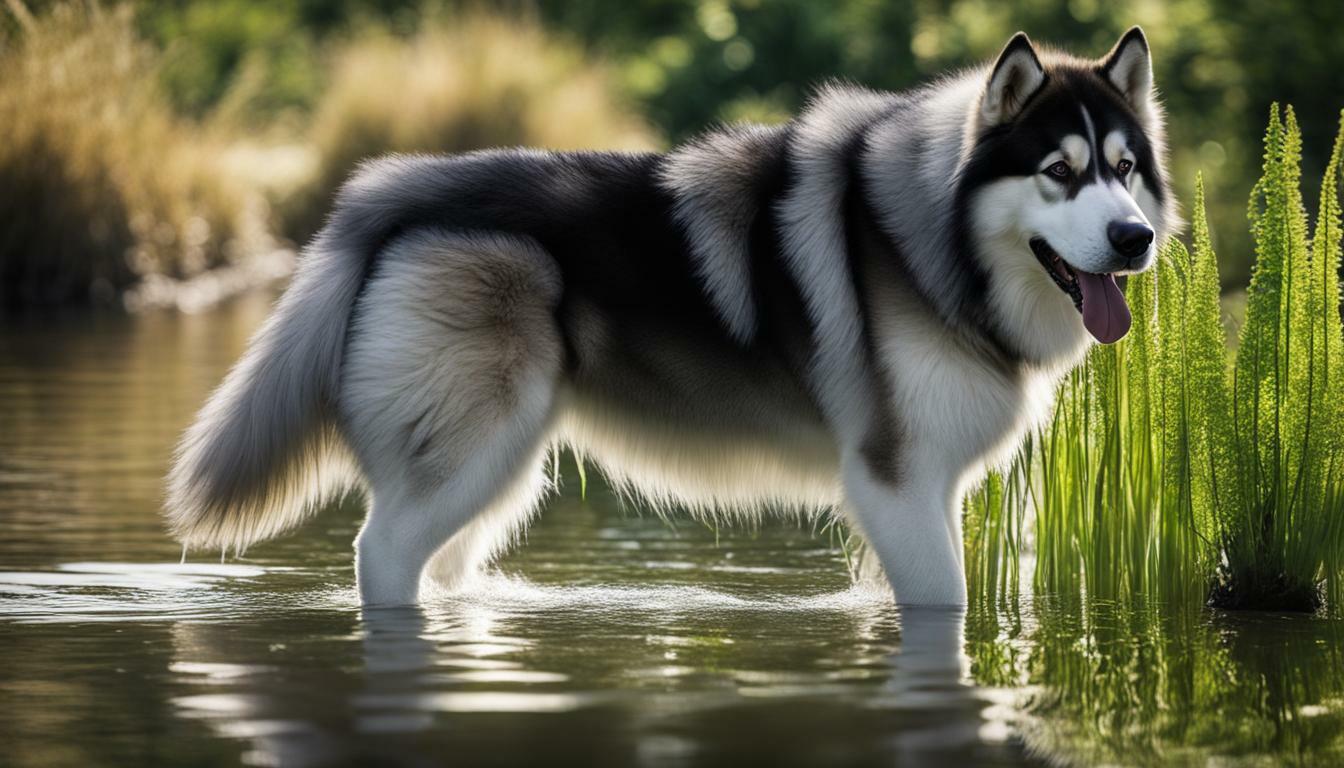Alaskan Malamutes are known for their strength and endurance, but do they have a natural affinity for swimming? Many owners wonder if these majestic dogs enjoy taking a dip in the water, and the answer may surprise you. While Alaskan Malamutes are not natural-born swimmers due to their heavy double coat, they can still learn to enjoy swimming with the right training and precautions.
It’s important to understand that each individual Alaskan Malamute may have different preferences when it comes to water activities. Some may take to the water more readily, while others may require more time and patience to become comfortable. To help them adapt, positive reinforcement and a safe environment are key.
When introducing your Alaskan Malamute to swimming, it’s crucial to take precautions. Start in shallow water, use a floatation device, and provide close supervision. This will help build their confidence and ensure their safety as they gradually explore deeper areas.
Observing your Alaskan Malamute’s behavior in the water is essential. Signs of enjoyment may include wagging tails, relaxed body language, and a willingness to play. However, some dogs may exhibit anxiety or discomfort, which should be taken into consideration. Providing a positive and supportive environment will help establish a positive association with swimming.
In conclusion, while Alaskan Malamutes may not be natural swimmers, they can learn to enjoy swimming with proper training and precautions. Each dog is unique, so it’s important to respect their individual preferences and comfort levels. With patience, positive reinforcement, and a safe environment, you can help your Alaskan Malamute embrace the joy of swimming.
Alaskan Malamutes’ Natural Swimming Abilities
Alaskan Malamutes have a thick double coat and were bred for sled pulling, but how does this impact their swimming abilities? While their heavy coat does provide insulation in cold weather, it can also weigh them down in the water. Due to their genetic traits, Alaskan Malamutes are not considered natural-born swimmers like some other dog breeds. However, this doesn’t mean they can’t enjoy swimming with proper training and precautions.
Despite their initial challenges in the water, Alaskan Malamutes possess natural instincts that can support their swimming abilities. Their well-muscled bodies and strong legs enable them to paddle and propel through the water. Additionally, their natural buoyancy allows them to stay afloat. With patient guidance and positive reinforcement, Alaskan Malamutes can learn to use these inherent abilities and develop confidence in the water.
In order to help Alaskan Malamutes overcome their initial hesitations, it’s important to create a safe and supportive environment. Starting in shallow water or even a kiddie pool can help build their confidence. Gradually progressing to deeper areas, using a floatation device, and closely supervising their swimming are important measures to ensure their safety. By taking these precautions and providing the necessary training, Alaskan Malamutes can gradually become more comfortable and even enjoy swimming as a recreational activity.
| Key Points |
|---|
| Alaskan Malamutes have a thick double coat which can affect their swimming abilities. |
| Their strong muscles and natural buoyancy contribute to their swimming potential. |
| Starting in shallow water, using floatation devices, and closely supervising can help them overcome initial hesitations. |
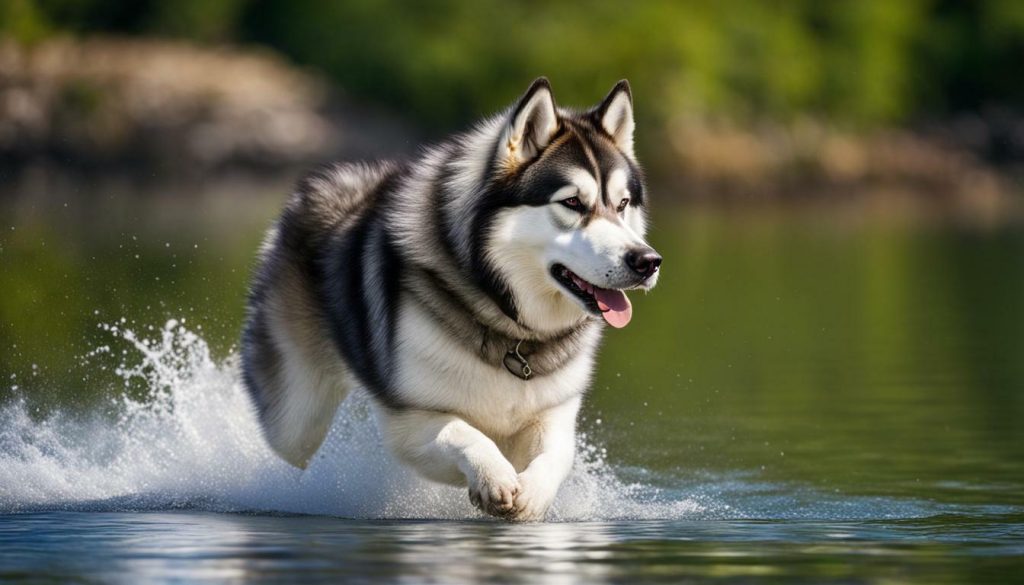
Each Alaskan Malamute is unique and may have different preferences when it comes to water activities. Some may take naturally to swimming, while others may prefer other forms of water play. Observing their behavior and body language in the water can provide valuable insight into their comfort level and enjoyment.
In conclusion, while Alaskan Malamutes may not be natural-born swimmers, they can still develop the ability to enjoy swimming with the proper training, patience, and precautions. Their thick double coat and breeding history may pose initial challenges, but with time and a positive approach, Alaskan Malamutes can learn to embrace the water and engage in water activities that bring them joy and mental stimulation.
Factors Influencing Alaskan Malamute Swimming Preference
Like humans, Alaskan Malamutes are unique individuals, and their swimming preferences can be influenced by various factors. While some may naturally take to the water with enthusiasm, others may have reservations or even an aversion to swimming. Understanding these factors can help you create a positive and enjoyable water experience for your furry friend.
One factor that can influence an Alaskan Malamute’s swimming preference is their individual personality. Just as humans have different likes and dislikes, so do dogs. Some Alaskan Malamutes may have a more adventurous and water-loving nature, while others may be more cautious and prefer to stay on dry land. It’s important to respect and understand your dog’s personality when encouraging them to swim.
Prior experiences can also play a role in an Alaskan Malamute’s swimming preference. If they’ve had positive experiences in the water, such as gradual introductions and enjoyable play sessions, they may be more inclined to swim. On the other hand, if they’ve had a negative experience, such as a distressing incident or lack of exposure to swimming, they may develop a fear or hesitation towards water.
Finally, some Alaskan Malamutes may have a genetic disposition towards being hydrophobic or hydrophilic. While hydrophobia refers to a fear or aversion to water, hydrophilic describes a natural attraction or love for water. These predispositions can vary from dog to dog, and it’s important to take them into consideration when encouraging your Alaskan Malamute to swim.
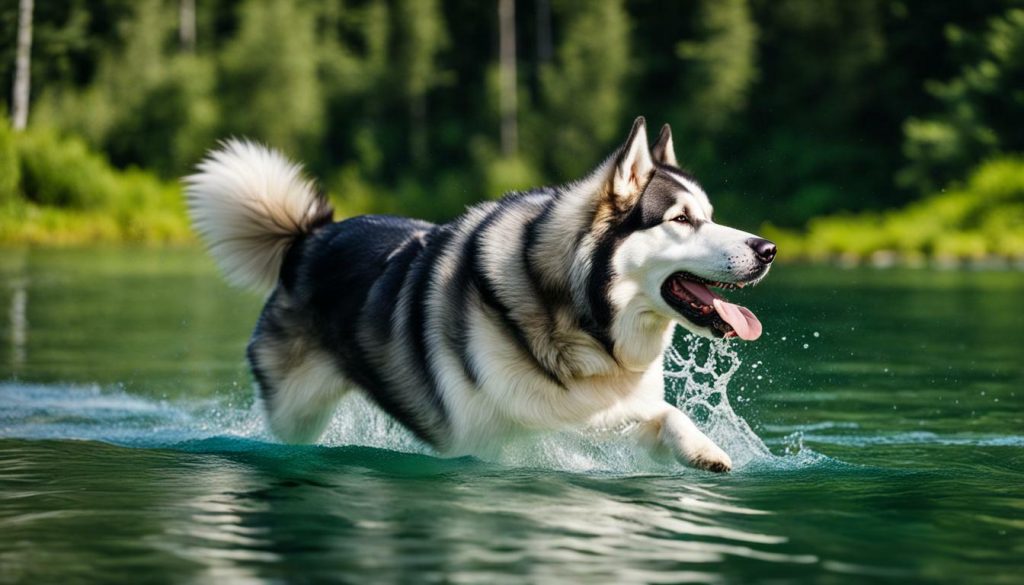
Table 1: Summary of Factors Influencing Alaskan Malamute Swimming Preference
| Factors | Description |
|---|---|
| Personality | Some Alaskan Malamutes may have a more adventurous and water-loving nature, while others may be more cautious and prefer to stay on dry land. |
| Prior Experiences | Positive experiences in the water can create a greater inclination towards swimming, while negative experiences can lead to fear or hesitation. |
| Genetic Disposition | Some Alaskan Malamutes may have a genetic predisposition towards being hydrophobic (fear or aversion to water) or hydrophilic (natural attraction or love for water). |
If your Alaskan Malamute is hesitant about swimming, with the right approach, you can help them overcome their fears and develop confidence in the water. Alaskan Malamutes are not natural-born swimmers due to their heavy double coat, which can weigh them down in the water. However, with patience, positive reinforcement, and a safe environment, they can learn to enjoy swimming just like any other dog.
One effective way to train your Alaskan Malamute to swim is through positive reinforcement. This involves rewarding them with treats, praise, and affection when they show interest or make progress in the water. Start by introducing them to shallow water and gradually increase the depth as they become more comfortable. It’s important to remain patient and not force them into the water if they seem anxious or scared.
Creating a safe and supportive environment is crucial when training your Alaskan Malamute to swim. Always use a floatation device, such as a life jacket, to ensure their safety in deeper water. Keep a close eye on them at all times, especially when they are still learning. Starting in shallow water and gradually moving to deeper areas will help build their confidence and make the experience more enjoyable for them.
In conclusion, while Alaskan Malamutes may not have a natural affinity for swimming, they can still be trained to enjoy water activities. By using positive reinforcement, creating a safe environment, and starting with shallow water, you can help your Alaskan Malamute overcome any fears and develop a love for swimming. Remember to be patient and understanding throughout the training process, as each individual dog may have different preferences when it comes to water activities.
Precautions for Alaskan Malamute Swimming
While swimming can be an enjoyable activity for Alaskan Malamutes, it’s essential to take certain precautions to ensure their safety. These precautions are especially important due to their heavy double coat and potential hydrophobia tendencies. Here are some tips to keep in mind:
| Precaution | Description |
|---|---|
| Use floatation devices | When introducing your Alaskan Malamute to swimming, consider using a floatation device such as a life jacket to provide extra support and peace of mind. |
| Supervise closely | Always keep a close eye on your Alaskan Malamute when they are in the water, ensuring they don’t venture too far or encounter any potential dangers. |
| Start in shallow water | Begin by introducing your Alaskan Malamute to the water in shallow areas, gradually increasing depth as they become more comfortable and confident. |
“Swimming with my Alaskan Malamute has been a great way for us to bond and stay active. However, I always make sure to take the necessary precautions to ensure his safety. Using a life jacket and closely supervising him has given me peace of mind, especially considering his heavy coat. We started in shallow water, allowing him to get used to the sensation before progressing to deeper areas. It’s been a rewarding experience for both of us!” – Alaskan Malamute owner
Image
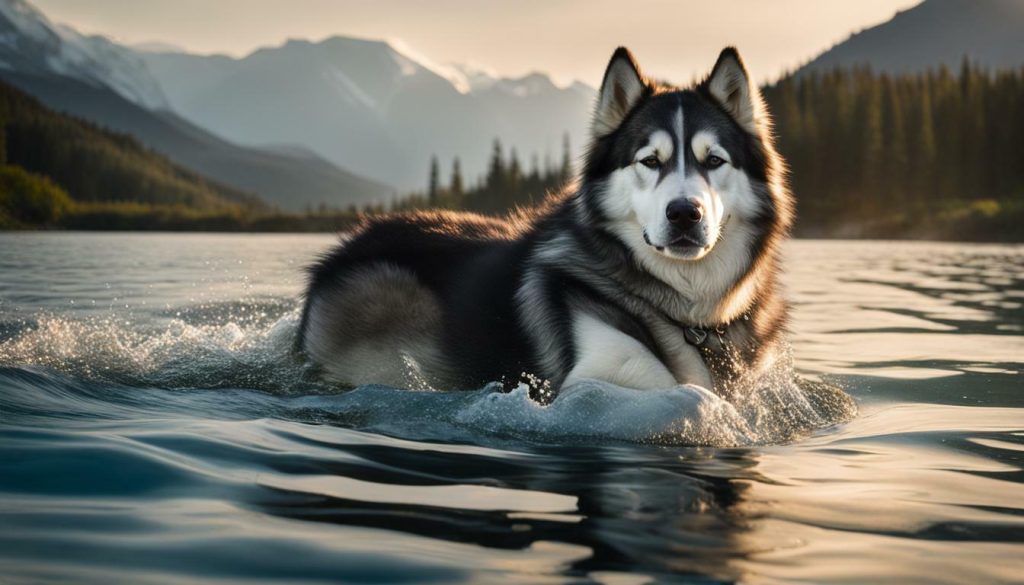
In summary, while Alaskan Malamutes may not be natural-born swimmers due to their heavy double coat, with the right precautions and training, they can enjoy swimming just like any other dog. By using floatation devices, closely supervising them, and starting in shallow water, you can ensure their safety while they have fun in the water. Remember, each Alaskan Malamute is unique, so observe their behavior and preferences, and provide a positive and supportive environment for them to thrive!
Observing Alaskan Malamute’s Behavior in the Water
Understanding your Alaskan Malamute’s behavior in the water can help you determine if they are truly enjoying swimming or if they may need further training or support. While some Alaskan Malamutes may take to the water naturally, others may need more time and encouragement to feel comfortable. Each dog is unique, so it’s essential to pay attention to their body language and reactions when engaging in water activities.
When observing your Alaskan Malamute in the water, look for signs of enjoyment, such as a relaxed body posture, wagging tail, and a willingness to explore and play. They may show enthusiasm by splashing around, retrieving toys, or even diving underwater. These behaviors indicate that your Alaskan Malamute is likely having a great time in the water.
“My Alaskan Malamute, Luna, absolutely loves swimming. She jumps right in and could spend hours fetching her water toys. It’s such a joy to see her having so much fun in the water!” – Alaskan Malamute owner, Jessica
On the other hand, some Alaskan Malamutes may exhibit signs of anxiety or discomfort when in the water. These can include tense body posture, ears pinned back, panting excessively, or attempting to exit the water. If you notice these signs, it’s important to provide reassurance, take a step back in the training process, and consider seeking guidance from a professional dog trainer or behaviorist who can help tailor a plan to your dog’s specific needs.
| Signs of Enjoyment | Signs of Anxiety or Discomfort |
|---|---|
| Relaxed body posture | Tense body posture |
| Wagging tail | Ears pinned back |
| Willingness to explore and play | Panting excessively |
| Splashing around | Attempting to exit the water |
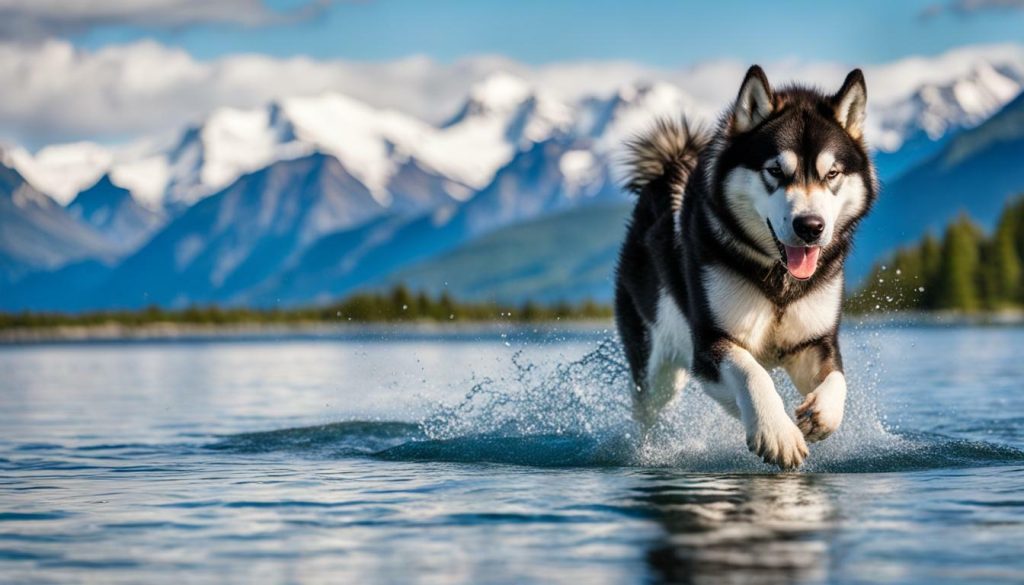
By understanding your Alaskan Malamute’s behavior in the water and providing a positive and supportive environment, you can enhance their swimming experience. Remember, not all Alaskan Malamutes are natural-born swimmers, but with patience and training, they can learn to enjoy water activities at their own pace. So, keep an eye on their cues, celebrate their progress, and continue to create memorable moments together.
Water Activities for Alaskan Malamutes
If your Alaskan Malamute enjoys being in the water, there are various fun and engaging activities you can introduce to keep them entertained and active. These activities not only provide physical exercise but also allow your furry friend to cool off on hot days. Remember, always consider your dog’s individual preferences and abilities when choosing water activities.
One popular water activity for Alaskan Malamutes is retrieving toys from the water. You can toss a floating toy into a pool or a calm body of water and encourage your dog to swim and retrieve it. This not only stimulates their natural instincts but also gives them a chance to practice their swimming skills. Be sure to use toys specifically designed for water use to ensure they are safe and float properly.
In the words of renowned dog trainer, Karen Pryor, “Swimming is a fantastic way to exercise your Alaskan Malamute and provide mental stimulation. The water provides resistance that works their muscles, and the act of swimming engages their minds.”
Another enjoyable activity is playing fetch in the water. Find a spacious area near a lake or beach where your Alaskan Malamute can safely retrieve balls or floating toys from the water. This game not only encourages swimming but also enhances their retrieving skills and agility. Just remember to use buoyant toys and gradually increase the distance as your dog becomes more confident in the water.
Water Playdates
If your Alaskan Malamute enjoys socializing with other dogs, organizing water playdates can be a great way to provide them with both exercise and companionship. Find a secure and monitored location where dogs can swim together under supervision. This activity allows your dog to interact with others while enjoying the benefits of water play.
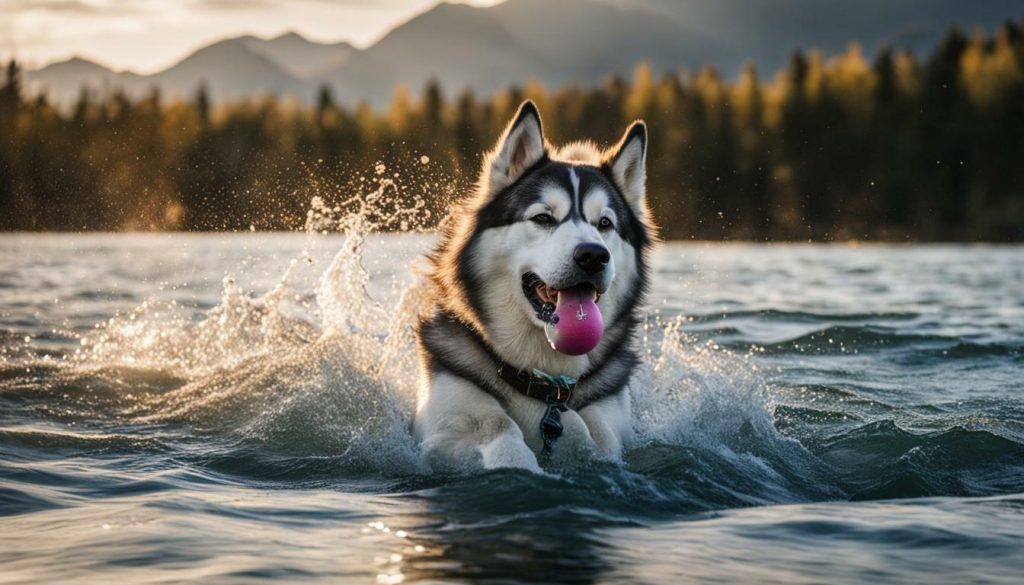
Remember to always prioritize safety during water activities. Use a life jacket or floatation device, especially for inexperienced swimmers or those with water anxiety. Start in shallow water and gradually move to deeper areas as your Alaskan Malamute gains confidence. Keep a close eye on them to ensure they don’t get exhausted or encounter any hazards.
By providing a positive and supportive environment, you can help your Alaskan Malamute enjoy water activities to the fullest. Just remember to tailor the activities to their preferences and abilities, and always prioritize safety. So grab some toys, find a suitable location, and dive into the exciting world of water play with your furry friend!
| Water Activities | Description |
|---|---|
| Retrieve Toys | Toss floating toys into the water for your Alaskan Malamute to swim and retrieve. |
| Fetch in the Water | Play a game of fetch with buoyant balls or toys in a safe and spacious water area. |
| Water Playdates | Organize supervised playdates with other dogs where they can socialize and swim together. |
Alaskan Malamutes and Hydrotherapy
Hydrotherapy can be a beneficial form of exercise and rehabilitation for Alaskan Malamutes, providing them with low-impact movement and potential therapeutic benefits. Due to their heavy double coat and large size, Alaskan Malamutes may be prone to joint or mobility issues, making hydrotherapy an excellent option for maintaining their overall well-being.
“Hydrotherapy has been proven to be effective in improving muscle strength, flexibility, and circulation in dogs,” says Dr. Kimberly Johnson, a veterinarian specializing in canine rehabilitation. “The buoyancy of the water reduces the strain on their joints, allowing for a wider range of motion without the added stress.”
During hydrotherapy sessions, Alaskan Malamutes are typically placed in a specially designed pool or underwater treadmill, where they can safely exercise and engage in controlled movements. The warm water helps to relax their muscles and promote blood flow, aiding in the healing process for any injuries or conditions they may have.
It is important to note that hydrotherapy should always be performed under the guidance of a trained professional. They will be able to tailor the exercises to the specific needs of the Alaskan Malamute, ensuring that the session is both effective and safe. Regular hydrotherapy sessions can not only improve their physical fitness but also provide mental stimulation and relaxation, contributing to their overall well-being.
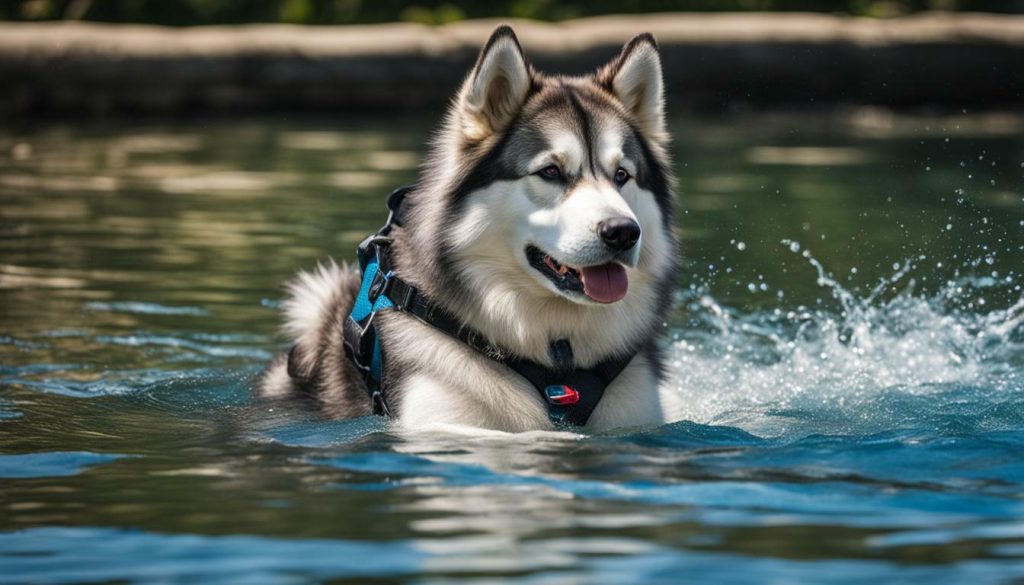
| Benefits of Hydrotherapy for Alaskan Malamutes: | Description: |
|---|---|
| Low-impact exercise | The buoyancy of the water reduces stress on joints, making it an ideal exercise for dogs with mobility issues. |
| Improved muscle strength | The resistance of the water helps to build and strengthen muscles, promoting better overall fitness. |
| Increased range of motion | The warm water relaxes muscles and allows for a wider range of motion, aiding in flexibility. |
| Pain relief | The hydrostatic pressure of the water can provide relief from pain caused by conditions such as arthritis or hip dysplasia. |
Conclusion
Hydrotherapy can offer numerous benefits for Alaskan Malamutes, supporting their physical health and enhancing their quality of life. By engaging in regular hydrotherapy sessions, Alaskan Malamutes can enjoy low-impact exercise, improved muscle strength and flexibility, increased range of motion, and potential pain relief. However, it is essential to consult with a professional and ensure appropriate supervision to ensure the safety and effectiveness of each session. Remember to always prioritize the well-being and specific needs of your Alaskan Malamute when considering hydrotherapy as a form of exercise and rehabilitation.
Conclusion: Alaskan Malamutes and Swimming
Alaskan Malamutes can indeed learn to enjoy swimming with the right training and support, but it’s important to remember that their preferences may vary, and it’s essential to respect their individual comfort levels in the water.
These majestic dogs, known for their strength and endurance, may not be natural-born swimmers due to their heavy double coat and genetic traits. However, with patience, positive reinforcement, and a safe environment, they can overcome their initial reluctance and develop a love for the water.
When introducing an Alaskan Malamute to swimming, it’s crucial to prioritize their safety. Starting in shallow water and gradually progressing to deeper areas allows them to build confidence at their own pace. Supervision is key, as well as providing them with a floatation device to ensure their buoyancy and minimize the risk of fatigue.
It’s important to observe each Alaskan Malamute’s behavior in the water to gauge their comfort level, whether they display signs of enjoyment, anxiety, or discomfort. By closely monitoring their reactions, adjustments can be made to ensure their well-being and create a positive experience every time.
Ultimately, the key to nurturing a love for swimming in Alaskan Malamutes lies in understanding that each dog is unique. Some may fully embrace water activities, eagerly diving and retrieving toys, while others may prefer to stay on dry land and observe from a distance. Respecting and accommodating their individual preferences is essential for fostering a strong bond and a positive relationship with the water.
FAQ
Q: Do Alaskan Malamutes naturally enjoy swimming?
A: Alaskan Malamutes are not natural-born swimmers due to their heavy double coat. However, with time and training, they can learn to enjoy swimming.
Q: How can I train my Alaskan Malamute to swim?
A: Training your Alaskan Malamute to swim involves patience, positive reinforcement, and creating a safe environment. Start in shallow water and gradually progress to deeper areas.
Q: Are there any precautions I should take when my Alaskan Malamute is swimming?
A: Yes, it is important to use a floatation device, supervise closely, and start in shallow water. Always prioritize your dog’s safety during water activities.
Q: How can I observe my Alaskan Malamute’s behavior in the water?
A: Pay attention to signs of enjoyment, anxiety, or discomfort. Each Alaskan Malamute may have different preferences when it comes to water activities, so observe their behavior closely.
Q: Can Alaskan Malamutes engage in water activities other than swimming?
A: Yes, Alaskan Malamutes can participate in other water activities like retrieving toys or playing fetch in the water. It is important to provide positive and supportive environments for them.
